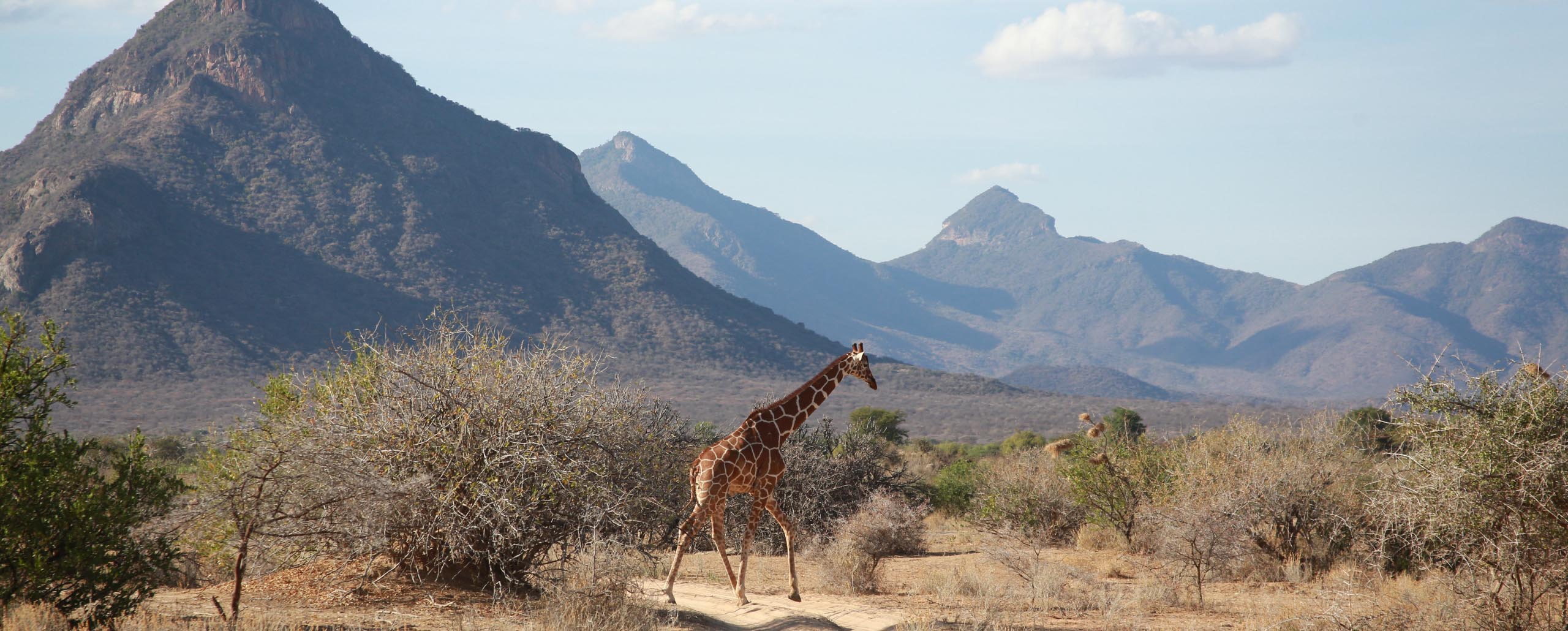Kenya mountains are often overshadowed by the more popular Mount Kenya, Africa’s second-highest mountain after Mount Kilimanjaro in Tanzania but did you know, there are 3,856 named mountains in Kenya alone. Mount Kenya, standing at 5,199 m/3,827 ft is the tallest and most conspicuous of the country.
Kenya is a stunning nation with incredible geographical diversity. The equator runs across the nation, which is located in East Africa. It borders Somalia, Uganda, Tanzania, Ethiopia, and South Sudan and covers a total area of 586,000 square kilometers. Low-lying coastal areas with coral reefs and islands define Kenya. The country’s southern half is made up of high plateaus, while the north is a dry and semi-arid desert. The Great Rift Valley, which features seven salt and freshwater lakes, cuts the nation in half.
Is there a mountain range in Kenya? When most people think of Kenya, they think of bush and grassland, although the country is home to two of the continent’s three tallest mountains.
Almost all of Kenya’s mountains are extinct or inactive volcanoes. Kenya’s general landscape is diversified, ranging from rainforest near the coast to the Great Rift Valley’s mountains.
Mount Kenya
This is Kenya’s highest mountain. It’s located in the country’s central region, roughly 100 miles north-east of Nairobi, the capital.
Mount Kenya has multiple unique summits, the tallest of which are Batian, Nelion, and Lenana. Aside from these three, there are more than a dozen additional named summits.
At 17,058 feet, Batian is the highest and indicates Mount Kenya’s peak (or 5,199 meters). Mount Kenya is only second in height to Mount Kilimanjaro on the African continent.
The Mount Kenya National Park, which is a renowned tourist destination, surrounds Mount Kenya at its base. Colobus monkeys, buffalo, and elephants all live in the park. Without prior mountaineering expertise, it is feasible to trek to Mount Kenya’s Lenana top.
N’gai, the local Kikuyu god, was thought to reside at the summit of Mount Kenya by the Kikuyu tribe.
Mount Elgon
Mount Elgon is Kenya’s second tallest peak after Mount Kenya. It is located on the western Kenya-Uganda border.
It may not be the highest, but it has a few distinguishing features of its own. It features one of the world’s largest calderas or volcanic craters, and its summit is a flat-topped plateau of basalt.
It stands at a total height of 13,852 feet (or 4,155 meters). Lava tube tunnels dot the mountain, which is a favorite haunt of local elephants and buffaloes. Eagles, rhinos, duikers, and leopards live in the national park that surrounds Mount Elgon.
Mount Longonot
Also a volcano, however, this one is inactive rather than extinct. It last erupted in the 1860s. Mount Longonot is at a height of 9,108 feet (or 2,776 meters).
The mountain’s slopes are scarred with ridges, earning it the Masai name “Oloonong’ot,” which means “mountain with many spurs.”
There is plenty of wildlife on the mountain and in the nearby park, including giraffe and zebra herds. It’s only 60 kilometers northwest of Nairobi, and it’s easily accessible by car. Mount Longonot is thickly wooded, including within the top crater, unlike some of Kenya’s other stony summits.
Namanga Hills
The Ol Doinyo Orok mountain is another name for the Namanga Hills. In the southern part of Kenya, one of the few remaining mist forest habitats may be found. A section of the mountain straddles the Tanzanian border.
The highest point is 8,360 feet (or 2,548 meters).
The Masai people dwell in the area, and their hunting has had an influence on the animal populations. Antelopes, ostriches, hyenas, and zebras are among the animals that live in the Namanga Hills. Although there is a national park there, it is not one of the most visited by tourists.
Menengai, Namarunu, Paka, and Suswa are some of Kenya’s other named peaks. The Great Rift Valley is home to all four of these mountains.
The highlands of Kenya are extremely famous tourist attractions, and virtually all of them have hiking trips accessible through a travel company. While not all can be ascended to the summit without proper mountaineering equipment, most may be hiked or walked at least a short way up the slopes.
Highlands, hills, and hiking sites in Kenya
Hiking, for example, has several advantages, but it requires the right setting in order to be pleasurable. Mountains provide such habitats, and Kenya has enough of them.
I’m sure you didn’t realize there are around 20 separate mountains in the United States. Some will be familiar to you, while others will be unfamiliar, but they all provide fantastic spots to visit on weekends and holidays if you want to spend some time on the road.
Kenya, a country in East Africa known for its beautiful scenery, diversified animals, and vast game reserves, is a destination you won’t want to miss on your travels.
Kenya also has some of East Africa’s tallest mountains, some of which are listed here.

